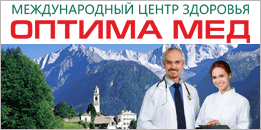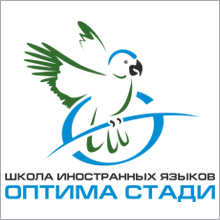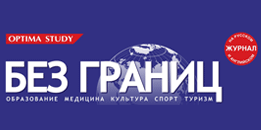Пригласительный билет
Samara
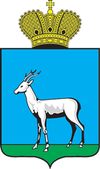 Samara, known from 1935 to 1991 as Kuybyshev is the sixth largest city in Russia and the administrative center of Samara Oblast. It is situated in the southeastern part of European Russia at the confluence of the Volgaand Samara Rivers on the east bank of the Volga. The Volga acts as the city’s western boundary; across the river are the Zhiguli Mountains, after which the local beer (Zhigulyovskoye) is named. The northern boundary is formed by the Sokolyi Hills and by the steppes in the south and east. The land within the city boundaries covers 46,597 hectares (115,140 acres). Population: 1,164,685 (2010 Census); 1,157,880 (2002 Census); 1,254,460 (1989 Census).
Samara, known from 1935 to 1991 as Kuybyshev is the sixth largest city in Russia and the administrative center of Samara Oblast. It is situated in the southeastern part of European Russia at the confluence of the Volgaand Samara Rivers on the east bank of the Volga. The Volga acts as the city’s western boundary; across the river are the Zhiguli Mountains, after which the local beer (Zhigulyovskoye) is named. The northern boundary is formed by the Sokolyi Hills and by the steppes in the south and east. The land within the city boundaries covers 46,597 hectares (115,140 acres). Population: 1,164,685 (2010 Census); 1,157,880 (2002 Census); 1,254,460 (1989 Census).
The metropolitan area of Samara-Tolyatti-Syzran within Samara Oblast constitutes the population of more than three million people. Formerly a closed city, Samara is now a large and important social, political, economic, industrial, and cultural center of European Russia, which in May 2007 hosted the European Union—Russia Summit.
Samara has a continental climate characterized by hot summers and cold winters.
The life of Samara’s citizens has always been intrinsically linked to the Volga River, which has not only served as the main commercial thoroughfare of Russia throughout several centuries, but also has great visual appeal. Samara’s river-front is one of the favorite recreation places for local citizens and tourists. After the Soviet novelist Vasily Aksyonov visited Samara, he remarked: «I am not sure where in the West one can find such a long and beautiful embankment. Possibly only around Lake Geneva».
Economy.
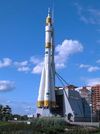 Samara is a large industrial center of the whole Volga river region. The city is among top ten Russian cities by industry volume. It is producing various outer space vehicles and machinery, aircraft, power stations, refinery, cranes. Samara food industry is known for its chocolate, vodka “Rodnik” and “Zhiguli” beer.
Samara is a large industrial center of the whole Volga river region. The city is among top ten Russian cities by industry volume. It is producing various outer space vehicles and machinery, aircraft, power stations, refinery, cranes. Samara food industry is known for its chocolate, vodka “Rodnik” and “Zhiguli” beer.
There are over 150 large and medium industrial plants in the city. About 25% of all bearings and 70% of all cables produced in Russia are made in Samara.
Transportation.
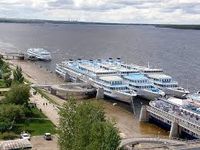 Samara is one of the largest transportation junctures in Russia, it is crossed by the shortest ways from central and western Europe to Siberia, Middle Asia and Kazakhstan.
Samara is one of the largest transportation junctures in Russia, it is crossed by the shortest ways from central and western Europe to Siberia, Middle Asia and Kazakhstan.
The Kurumoch International Airport handles flights throughout Russia and Central Asia and to Frankfurt, Prague, and Dubai.
There are rail links to Moscow and other major Russian cities. The new, unusual-looking railway station building was completed in 2008.[citation needed]
Samara is a major river port.
Samara is located on the M5 Highway, a major road between Moscow and the Ural region.
Public transportation includes the Samara Metro, trams, municipal and private bus lines, and trolleybuses. Local trains serve the suburbs.
Culture.
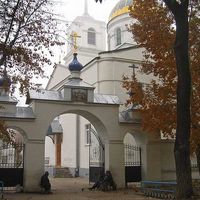 Among the main museums of Samara are:
Among the main museums of Samara are:
- Samara regional museum of history and local study named after Pyotr Alabin. It is one of the largest museums in the Volga region. It possesses rich archaeological and science collections (paleontological, mineralogical, zoo and botanic), historical and ethnographical collections.
- Samara regional art museum named after Anneta. It is one of the largest museums in the Volga region. The collection was based on paintings of Samara artists of the 19th-20th centuries as well as works of Russian art masters of the early 20th century.
- Mikhail Frunze house-museum. The display tells about Russian Civil War of 1918-1920.
- Ulyanovs’ family house-museum. By the 100th anniversary of Vladimir Lenin (1970) the furniture of the apartment was restored on the second floor, on the first floor there is a documentary display telling about Samara period in Vladimir Lenin’s life.
- Municipal museum “Children picture gallery”. The gallery possesses over 11,000 works of children from different countries, examples of applied and folk arts, world nations puppets, items of ancient life.
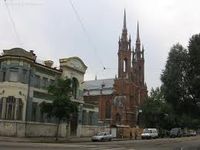
- Museum “Stalin’s Bunker”. The construction of the secret shelter began at the end of February, 1942. This is the most fortified bunker among those taken off the security list, its depth is 37 meters.
- Samara diocese historical church museum. The display shows the history of the Russian Orthodox church in Samara region.
- Municipal museum “Cosmic Samara” named after Dmitry Kozlov (Russian aerospace engineer who founded the Progress State Research and Production Rocket Space Center). The museum was opened in the pedestal of the rocket-carrier “Soyuz-U”. Beside the erected rocket there is a number of unique exhibits in the museum.
Samara is a multi-confessional city: there are a lot of Orthodox churches, monasteries, old believers’ churches, mosques, Jewish choral synagogue, Catholic and Protestant churches.
There are a lot of various historical buildings in Samara which make the city precious from the architectural point of view. In the city, there are a lot of statues, monuments and memorials, memorial boards as well as monuments to technical achievements.
Education.
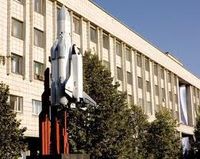 Samara has 188 schools of general education, lyceums, high schools, and the college of continuous education (from elementary up to higher education) known as Nayanova University existing under the aegis of International Parliament for Security and Peace attached to UNO. Samara is a major educational and scientific center of the Volga area. Twelve public and 13 commercial institutions of higher education as well as 26 colleges.
Samara has 188 schools of general education, lyceums, high schools, and the college of continuous education (from elementary up to higher education) known as Nayanova University existing under the aegis of International Parliament for Security and Peace attached to UNO. Samara is a major educational and scientific center of the Volga area. Twelve public and 13 commercial institutions of higher education as well as 26 colleges.
Samara is the home of Samara State Aerospace University (SSAU), one of Russia’s leading engineering and technical institutions. SSAU faculty and graduates have played a significant role in Russia’s space program since its conception. Samara is also the hometown of Samara State University, a prestigious higher-education institution in European Russia with competitive programs in Law, Sociology, and English Philology. Scientific research is also carried out in Samara. The Samara Research Center of the Russian Academy of Sciences incorporates the Samara branch of the Physical Institute, Theoretical Engineering Institute and Image Processing Systems Institute. Major research institutions operate in the city. Samara State Technical University (SamGTU) was founded in 1914. There are 11 faculties with over 20,000 students (2009) and 1,800 faculty members. On campus, there are four dormitory and ten study buildings. Samara State Academy of Social Sciences and Humanities was founded in 1911 as Samara Teachers Institute. Currently, the academy offers 42 various specialization in its 12 faculties.

